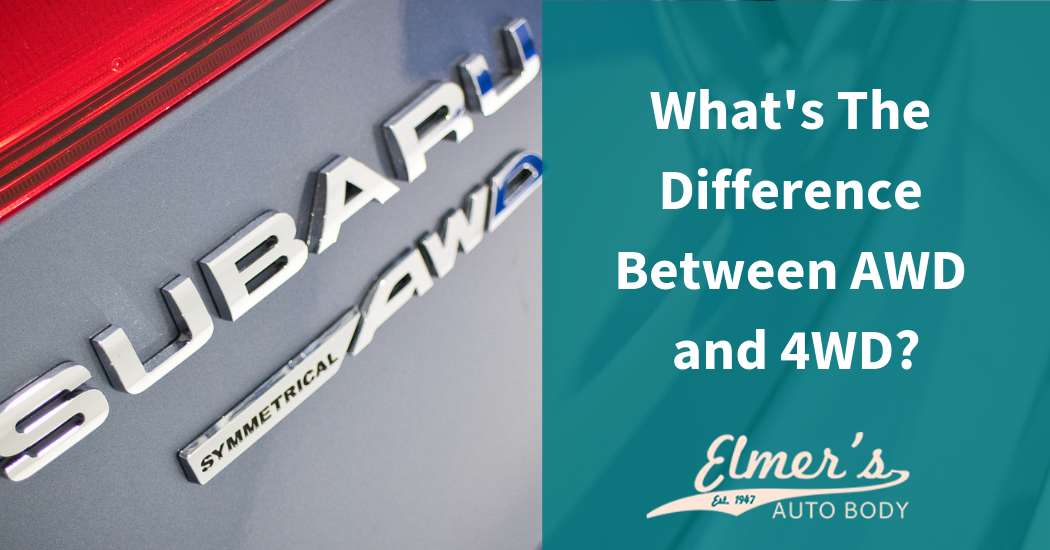Four-wheel drive used to be something limited to “big” vehicles noted for hard work or off-road capabilities. There were things like SUVs, pick up trucks, RVs and utility vehicles. But, in the past twenty years or so, four-wheel drive has become a common feature offered on most modern vehicles. This is great and all, but it can be confusing because, in recent times, there seems to be a choice between four-wheel drive and all-wheel drive.
Aren’t these the same? After all, cars have four wheels, so if it has four-wheel drive, then isn’t it all wheel? Well, let’s take a look today and find out what the differences are, and which is best suited for what conditions. You may be surprised by what’s revealed here.
All-Wheel Drive
All-wheel drive lives up to its name in pretty much every way. It is, in fact, a system where all four wheels are attached to a drive train system to provide traction and power in various adverse conditions. But, there are actually two types of all-wheel drive, one where it’s continuous (full-time AWD) and one where it’s intermittent (part-time AWD). The latter is usually computer-controlled these days.
How It Works
AWD systems, both full and part-time, generally work automatically, with no user control. They use one or two drive trains and multiple compound clutches to smartly distribute power to one or both sets of wheels accordingly.
You generally won’t notice the transition, in the case of part-time AWD, as smart sensors shift modes to deal with less traction or other adverse conditions (steep inclines, severe temperatures).
Pros and Cons of AWD
The most convenient aspect of AWD is the fact that it handles itself. As a driver, you don’t have to respond to conditions and enable/disable it. It’s electronically-controlled, usually with pretty intelligent systems to govern it. It works rather well in multiple conditions, and if you’re not a serious off-roader, then you might find this to be the least hassle-inducing choice to make.
However, those serious about off-roading or who deal with a constant bevy of rough road conditions, the control granted by 4WD is often considered more desirable due to the ability to pace and adjust traction based on intelligent intuition as an experienced driver.
Four-Wheel Drive
Four-wheel drive (4WD) is an older technology and was once a huge selling point of select vehicles in an age when a single axis bore all the torque in most designs. Today, there are two types of 4WD just as there are with AWD – full-time and part-time.
How It Works
While automatic 4WD with smart switching is an available feature in select vehicles, traditionally, 4WD is activated or deactivated by the user, with compound clutches to distribute torque between one or both axels depending.
With full-time 4WD, it can’t actually be turned off, but the user usually has the ability to control torque distribution between the axels. Conversely, part-time 4WD, which may not allow this precise distribution, can be activated or deactivated by the driver at will.
Pros and Cons
As we said earlier, off-road enthusiasts and professional drivers who handle a lot of consistent adverse road and weather conditions tend to prefer the level of control and agency provided by 4WD systems as opposed to AWD. They do handle rough, difficult conditions, on average, more effectively, especially if you can adjust torque precisely, and know what you’re doing with that.
However, unlike AWD, which is very fuel efficient, 4WD can result in some perceptible “gas guzzling”, meaning that if fuel efficiency matters highly, it may not be the option to go with.
Which Handles Snow Best?
For the average driver, the biggest adversary on the road is going to be snow. Yeah, it’s not that magical once you’re not a kid anymore. If you’re someone driving professionally, you’ll definitely prefer 4WD in snowy conditions, due to the control you get, which you need with heavier utilitarian vehicles.
For the average user, part-time AWD with smart switching handles snow easily, without distracting you so you can focus on keeping control of your vehicle. Snowy, icy roads are stressful, especially because you can’t control the other drives on the road.
Which Do You Need?
This all boils down to where you live and what you do with your car. Are you a professional driver who encounters rough terrain and harsh weather regularly? Are you an off-road enthusiast? Then you probably want 4WD with its adjustable torque and control.
Are you an average civilian driver who just needs that extra torque and power in hilly terrain and occasional nasty weather? Then full or part-time AWD is probably going to suffice, and save you fuel efficiency frustrations to boot.
To learn more about the technical science behind AWD and 4WD, and learn more key facts about their performance and applications, fill out our contact form below.

